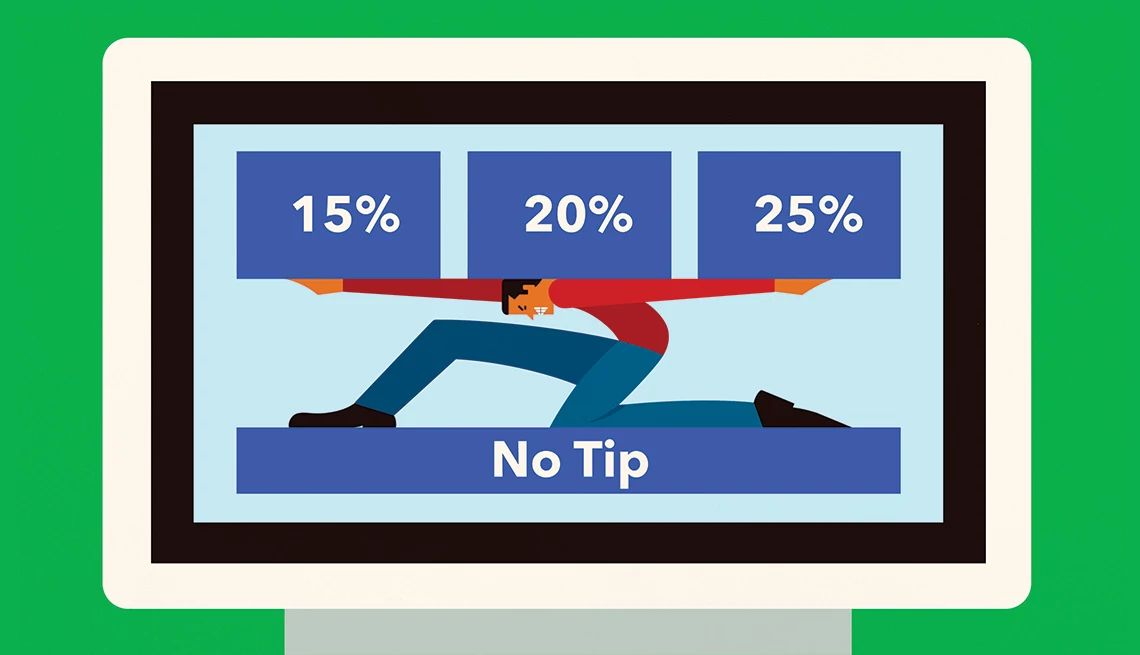
- Select a language for the TTS:
- UK English Female
- UK English Male
- US English Female
- US English Male
- Australian Female
- Australian Male
- Language selected: (auto detect) - EN
Play all audios:
Americans are being asked to tip for more services than ever, including in unconventional places like auto repair shops, airport newsstands, concert merchandise booths, even movie theater
concession counters. Many consumers are left scratching their heads, and rightfully so — tipping in America has become an increasingly opaque system, which has muddied the waters for tipping
etiquette. Forty percent of Gen X and 46 percent of boomers say they think tipping culture in the U.S. has spiraled out of control, according to a recent Bankrate survey. In a separate
WalletHub survey, half of Americans said they feel social pressure to tip. So, who should you tip — and how much — in today’s gratuity-obsessed culture? Let’s explore. I’M SURE YOU’VE HEARD
THIS QUESTION BEFORE, PERHAPS MANY TIMES, BUT IT SEEMS LIKE EVERY BUSINESS IS ASKING FOR TIPS THESE DAYS. I’M USED TO SEEING A TIP JAR FOR THE BARISTA AT MY COFFEE SHOP, BUT I’M NOW GETTING
HIT UP FOR GRATUITIES EVERYWHERE I GO. DO I REALLY NEED TO TIP MY HANDYMAN? WHAT ABOUT THE PERSON WHO TAKES MY POPCORN ORDER AT THE MOVIE THEATER? PLEASE ADVISE! Tipping your handyman? No,
especially if he sets his own rates. If he works for a small business or large corporation, I suggest you ask when you book the service if tipping is expected. The concession stand worker at
the movie theater wasn’t one that we used to say calls for a tip, but if there’s a tip jar or you get the option to leave a tip on a checkout screen, adding a $1 tip or up to 10 percent of
your order is considerate. But let’s take a step back and look at the bigger picture. Since the COVID-19 pandemic, tipping in America has changed significantly. During the pandemic, it
became common practice to tip more for many services and to tip in nontraditional settings to help small businesses and individual workers weather an economic crisis. At the same time, new
technology emerged that altered the checkout experience. Seemingly overnight, checkout touchscreens were everywhere. That means Americans were being asked to leave a tip more frequently —
and at a time when many consumers’ wallets were being pinched. From an etiquette standpoint, though, nothing has changed in terms of the kinds of tips we should be leaving. Fifteen percent
to 20 percent is still the standard tip for sit-down service in a restaurant and for personal services like haircuts, manicures and facials. Deli and cafe counters, along with takeaway from
fast-casual restaurants without servers, are up to your discretion since workers in these settings typically earn at least minimum wage and don’t rely on tips for the bulk of their income.
One thing you _shouldn’t_ do is feel anxious or pressured to leave a discretionary tip. And don’t worry about what the customer in front of you tipped or if the customer behind you is
judging your tip. Your tip is your business, no one else’s.



